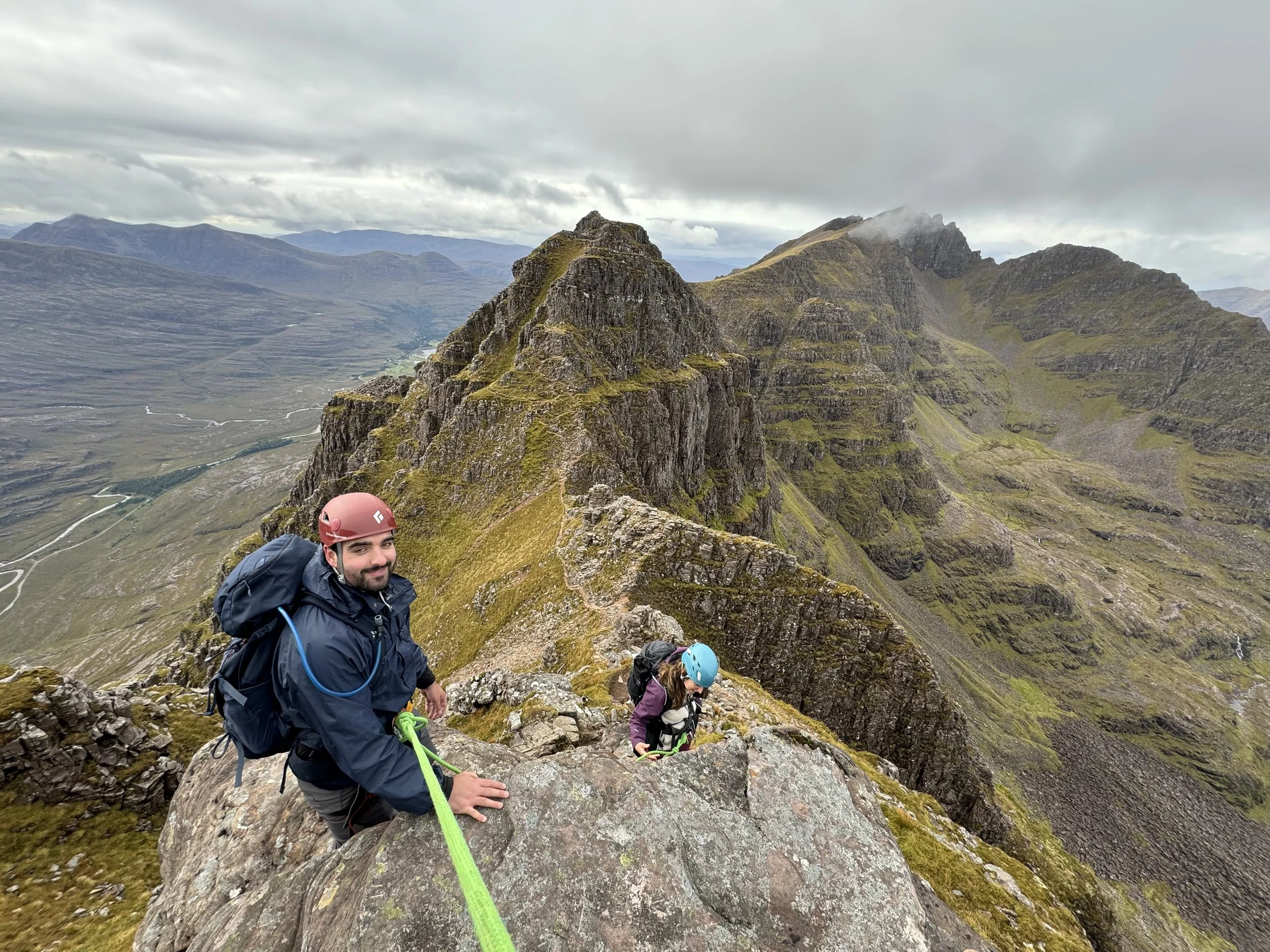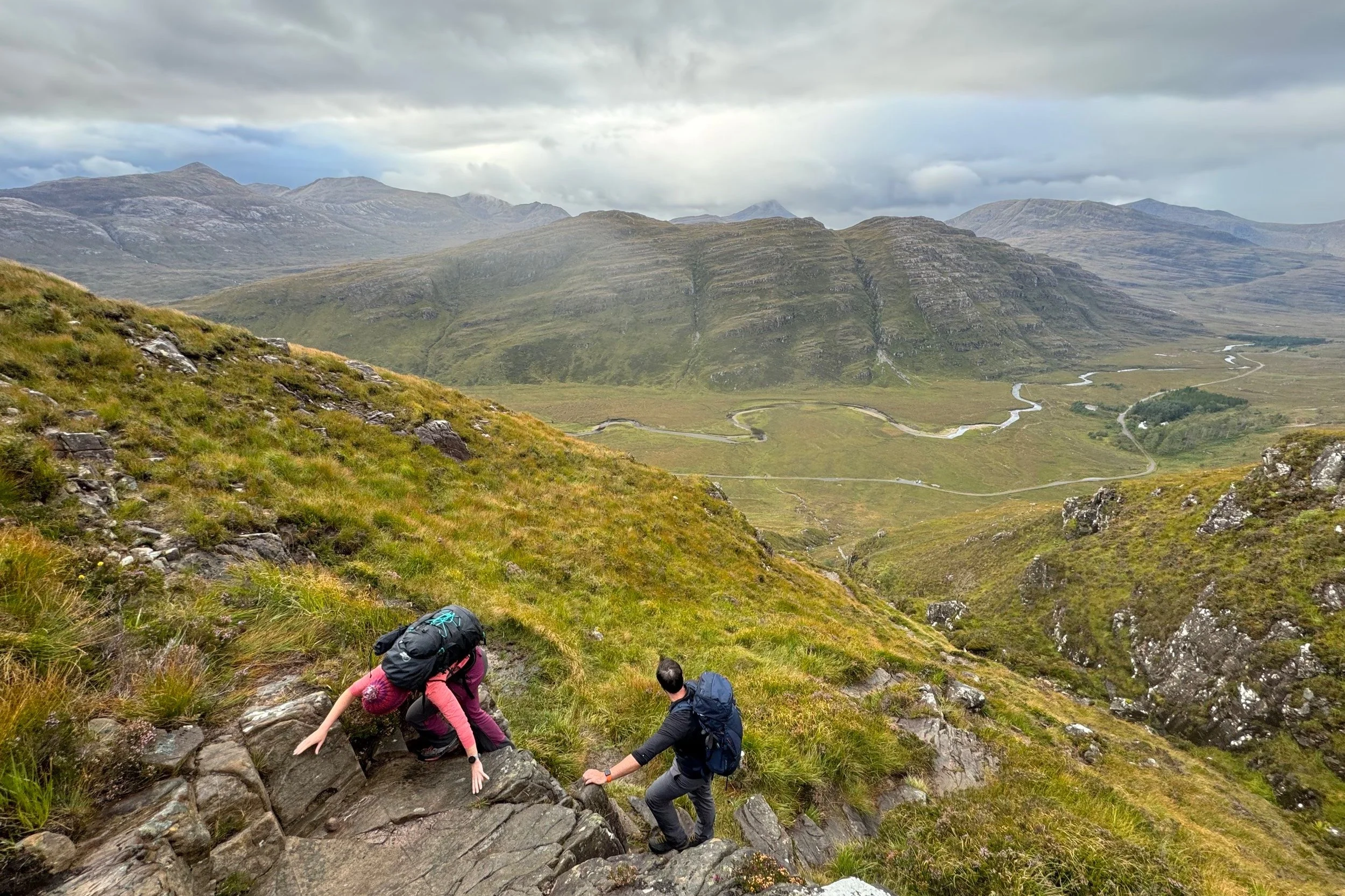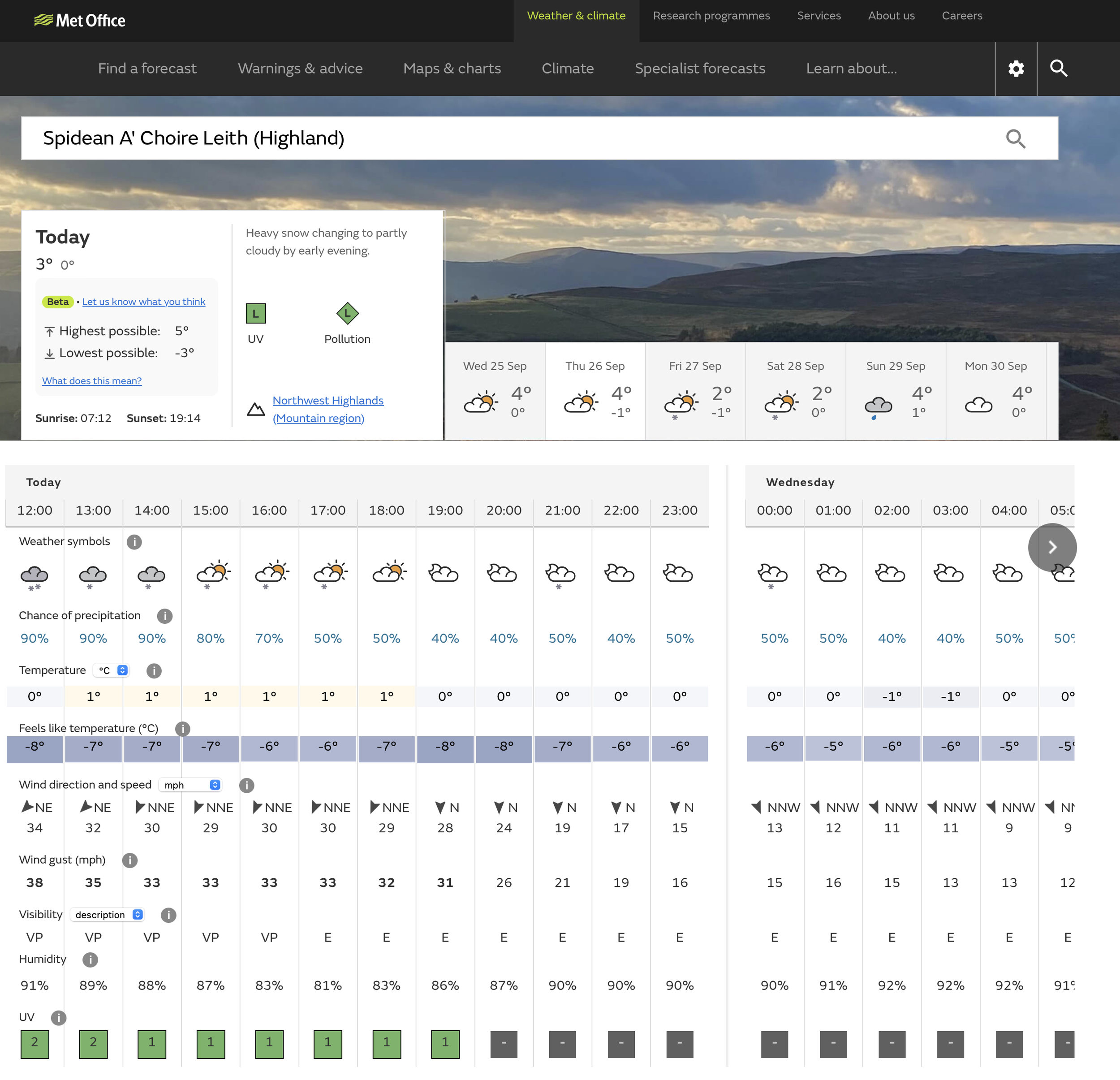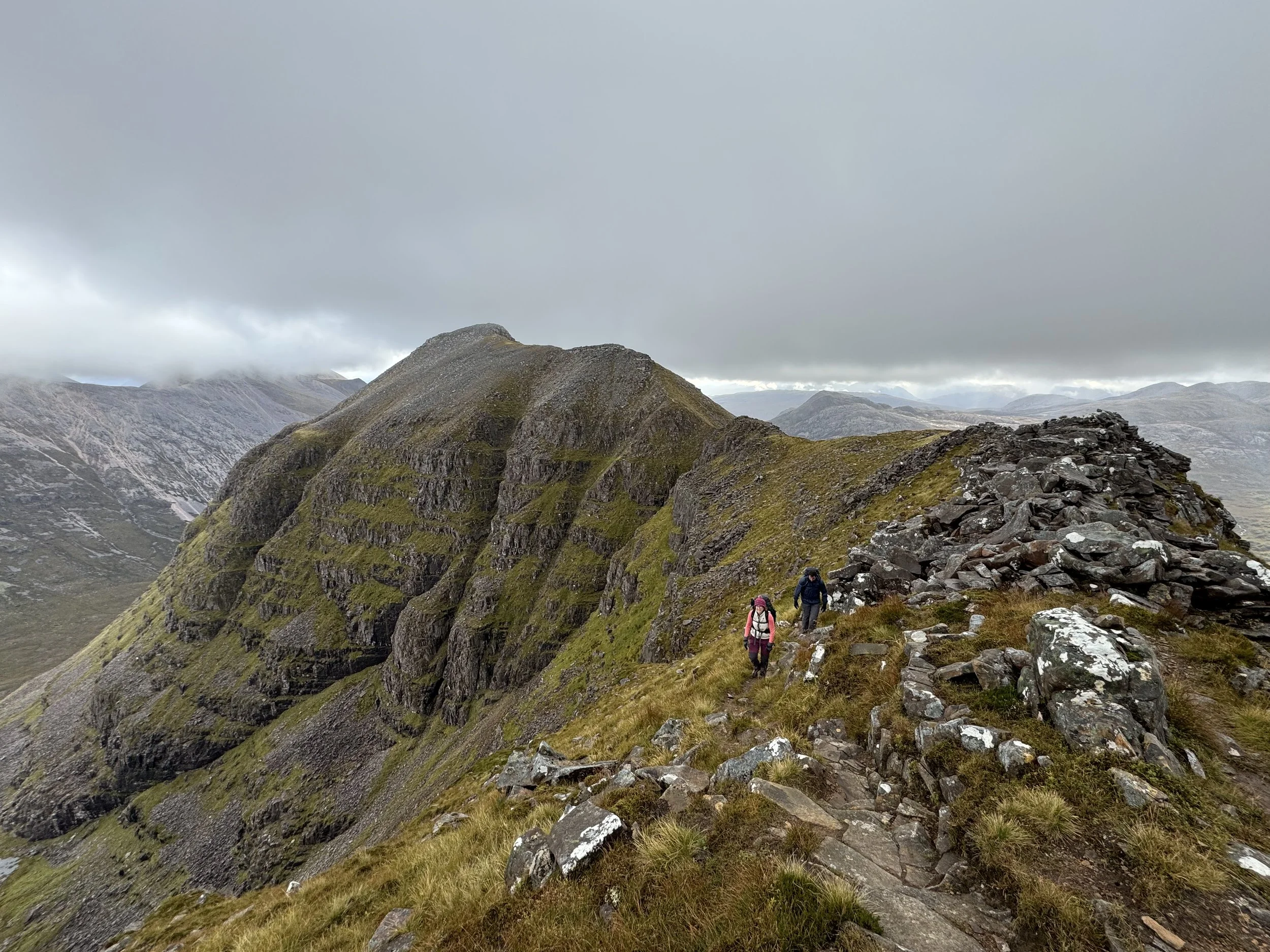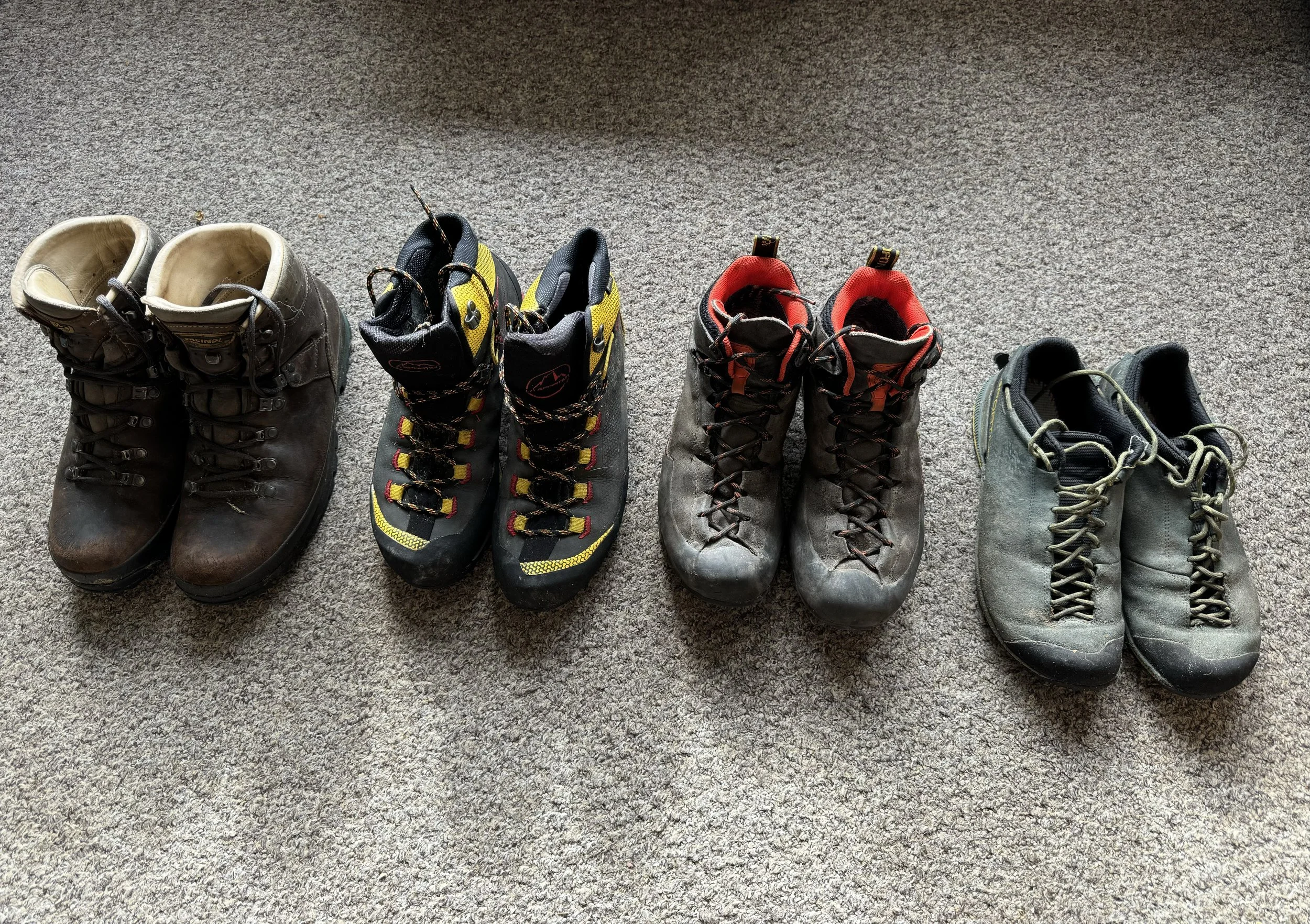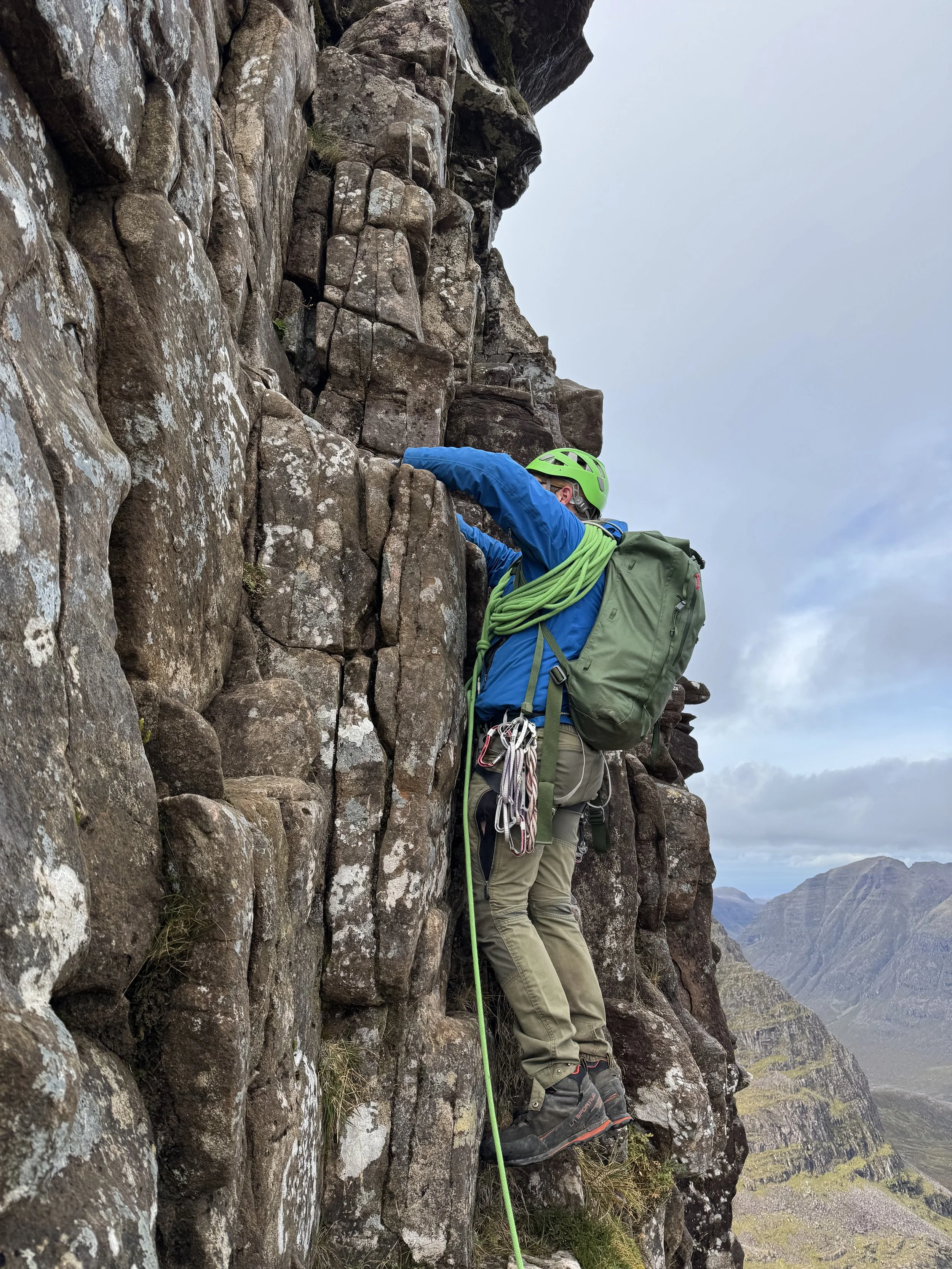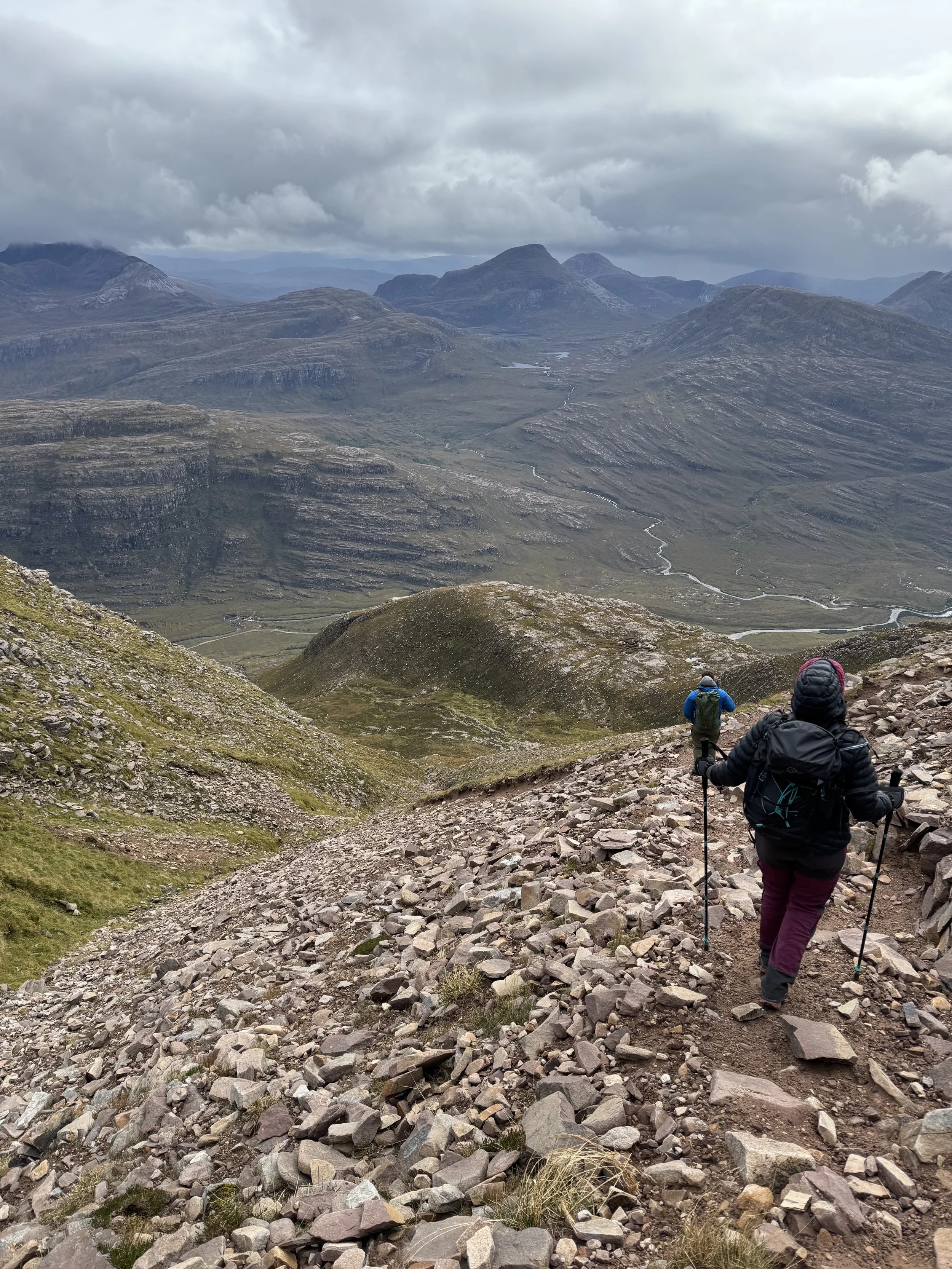How to scramble the Liathach ridge - is it for me?
Ashleigh and Sam on the pinnacles.
Preparing for the Liathach Traverse: What You Need to Know
The Liathach ridge, a classic mountain traverse in Torridon, is one of Scotland's great mountain days. The views, the scrambling, and the exposure make it a day to remember, but preparation is key to making sure it’s a good memory. Here’s a breakdown of what to expect, the gear you’ll need, and some escape options if things don’t go to plan.
The ascent up to the ridge from the car park
Planning Ahead
Before you even think about setting off, check the weather forecast. The wind is a big factor on Liathach due to its exposure. If you’re dealing with side winds of 60 km/h or more, it’s worth reconsidering—100 km/h side winds would make the ridge a no-go for most. However, this really depends on your experience level. In marginal conditions, you can always start and risk-assess once you’re on the ridge. A quick retreat is always an option, and there’s no shame in turning back—the mountain will be there another day.
Visibility is less critical, as the paths are well-trodden, but if you’re planning to take on the hardest parts of the ridge in total clag, it could be tricky. Good navigation skills are essential. If you’re not confident in your navigation, save Liathach for a day with more stable weather.
Check your winds, precipitation and air temps
Geology and Landscape
Liathach is a mountain of ancient Torridonian sandstone, which gives it a distinct red hue in places. The layers of rock are some of the oldest in the world, and the steep cliffs and ridges reflect millions of years of geological history. The Torridon area itself is known for its rugged beauty and remote feel, offering sweeping views across to Beinn Eighe, the Fannichs, and even Skye on clear days. The rock is general handles damp conditions better than most but with the consequences its not a suitable route choice with persistent heavy rain forecast.
Getting There Liathach is easily accessed from Inverness, Gairloch, and even Skye on days when the weather is better further north. If you’re planning on making a weekend of it, Torridon offers plenty of other scrambling and walking options, making it a great base for exploring the wider area.
Route Overview
The best place to park is at NG 935 566. If you have a second car, leaving it further down the road at NG 914 554 will make things easier for the end of the day. The ascent begins with a straightforward walk, followed by some easy Grade 1 scrambling. This is a great opportunity to test how the rock feels underfoot—pay attention to grip, and note how the wind is affecting you. Small adjustments here can make a big difference when you reach the more exposed sections later.
Once you’re on the ridge, you’ll follow it to the first Munro(Spidean a' Choire Lèith). From there, the route takes you to the infamous Pinnacles. These can be bypassed via an exposed footpath, but don’t underestimate the exposure. If you’re confident, the Pinnacles offer a Grade II scramble, with some optional eliminate sections approaching Grade III. The final tower includes a steep section that can feel quite committing—good technique and composure and most importantly goo conditions will go a long way here.
Approaching Spidean a Choire Leith (Munro 1)
Escape Options
Liathach offers few easy ways out once you’re committed to the ridge. If conditions change, or you feel unsure, in most case retrace your steps and descend via the main track. The Pinnacles themselves are the crux of the route, so once you’re past them, it’s a straightforward, albeit loose, descent down the final section.
Gear and Equipment
For footwear, scrambling boots with a climbing zone are ideal. The stiffer sole and durability provide great support on rock, and you’ll appreciate the grip when scrambling. Approach shoes with a softer rubber sole can also work well, especially for more experienced climbers. However, bear in mind that the final descent is loose and unforgiving, and approach shoes may not provide the same support.
Layering is key. Bring warm layers for windy or cool days, and always pack a waterproof. On sunny days, don’t forget sun cream, sunglasses, and a hat. Water is essential, as there are no easy refill points once you’re on the ridge.
Footwear for Liathach ridge traverse
Previous experience, Safety and Skills
Scrambling experience is a must for Liathach, and being comfortable with exposure will make the day much more enjoyable. One thing to take into consideration is the up and down nature of the ridge i.e scrambling in ascent and descent. This catches people out with the exposure as lots of people have only ever moved on graded scrambles in ascent and you can’t hide from the exposure when in descent. A good grounding before talking the Liachtach ridge would be dozen grade 1 scrambles(mainly in ascent but with a couple in descent) and handful of grade II in ascent.
Grade I - Jack’s rake (Pavey Ark), Dinnertime buttress (Aonach Dubh) - down Zig zags (Gearr Aonach), Striding and swirral (Helvellyn) CMD arete (Ben Nevis) down Ledge route (Ben Nevis)
Grade II - Aonach Eagach ridge would be the ideal preparation or follow onto the Liachtach ridge traverse.
If you’re unsure about tackling it solo, consider hiring a guide. As well as keeping you safe, a guide can help coach you through new techniques like rope work, movement on exposed terrain, and even emergency skills/decision making in stressful environments. Read about Jamie and our other guides here!
By keeping a clear head and preparing properly, the Liathach traverse can be an incredible day out. But remember—safety first. There’s no shame in turning back if conditions aren’t right. If you’re well-prepared and comfortable with exposure, Liathach is a challenging but rewarding adventure.

